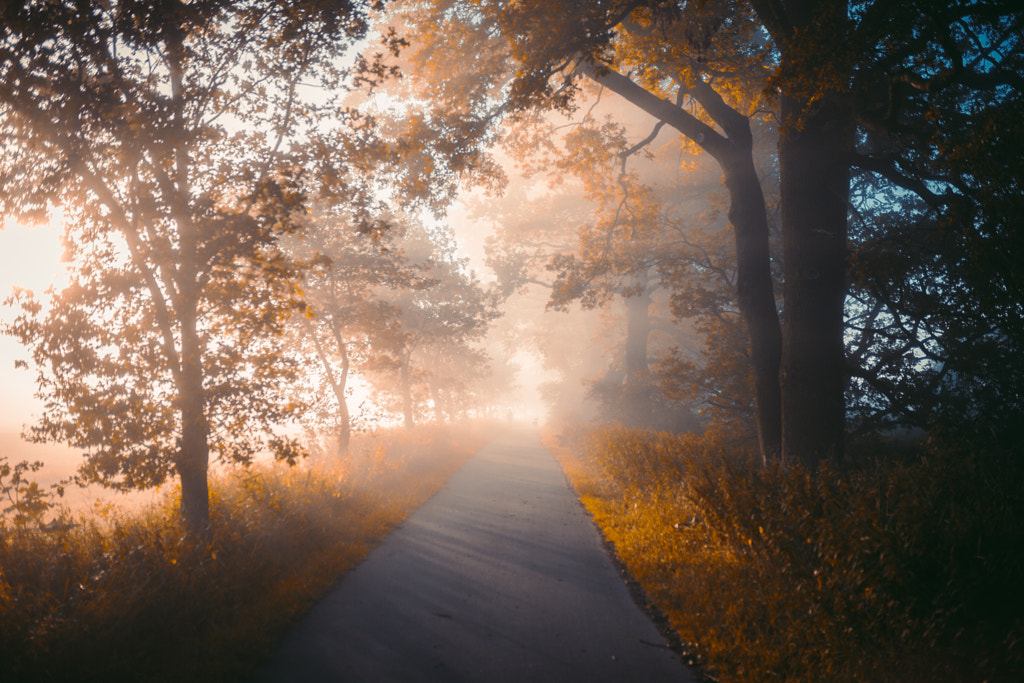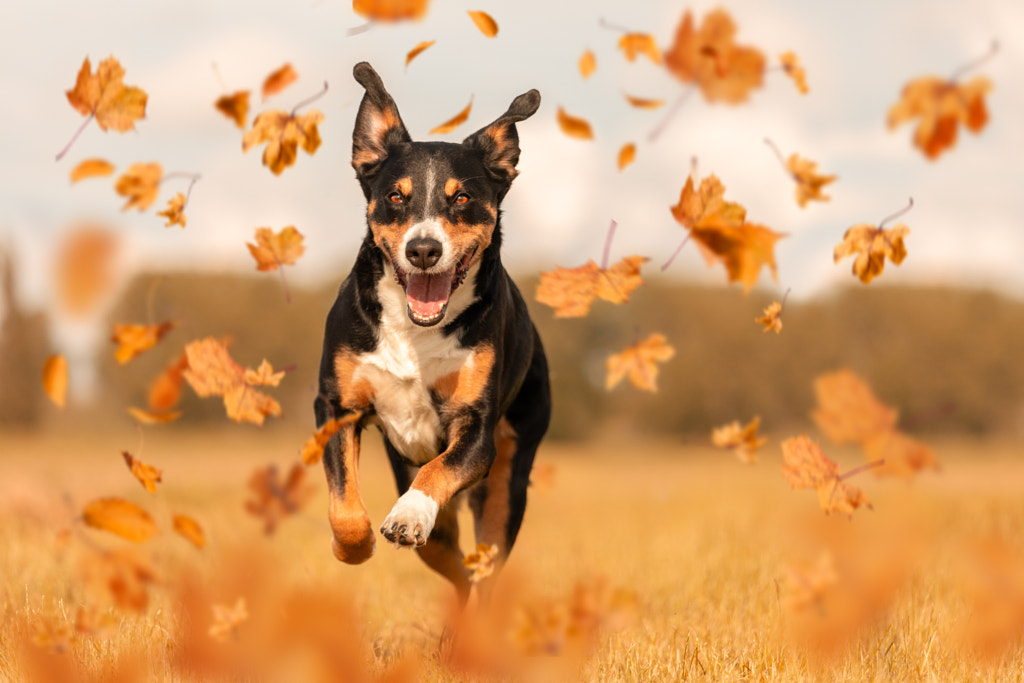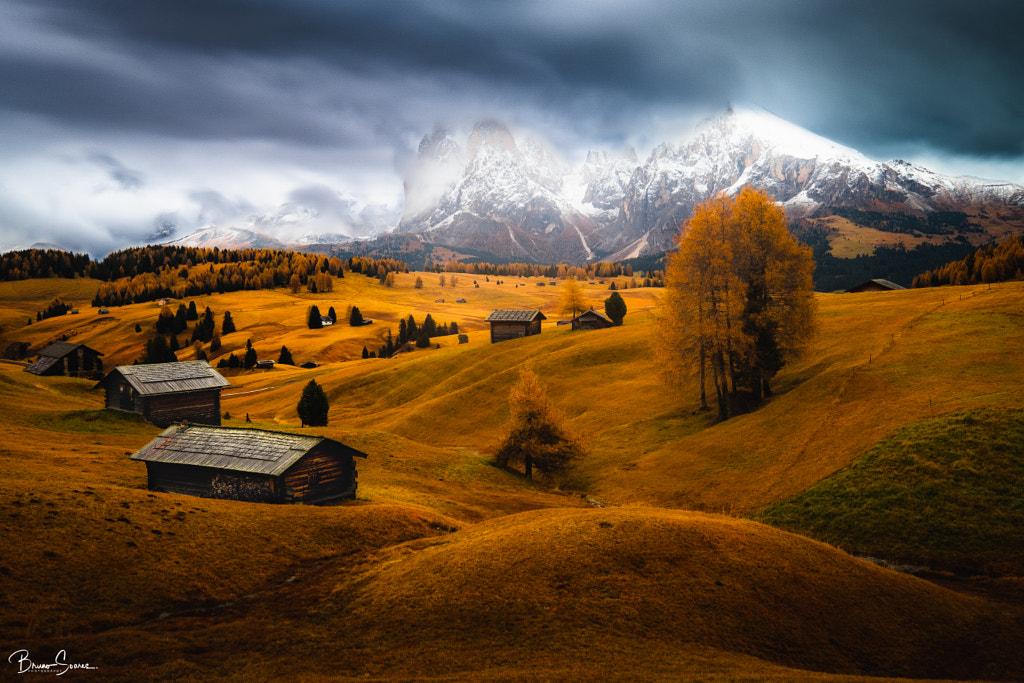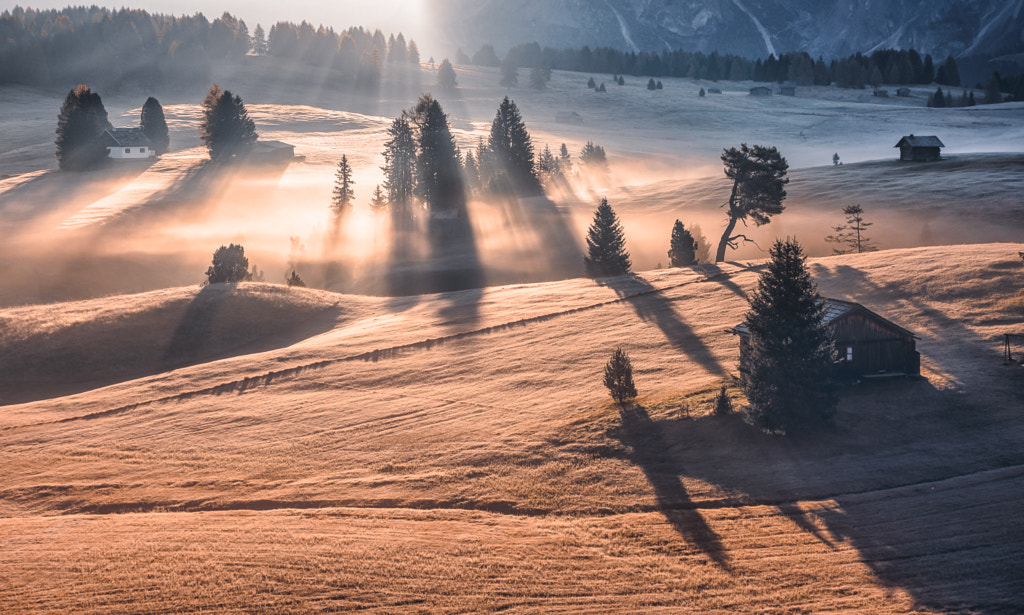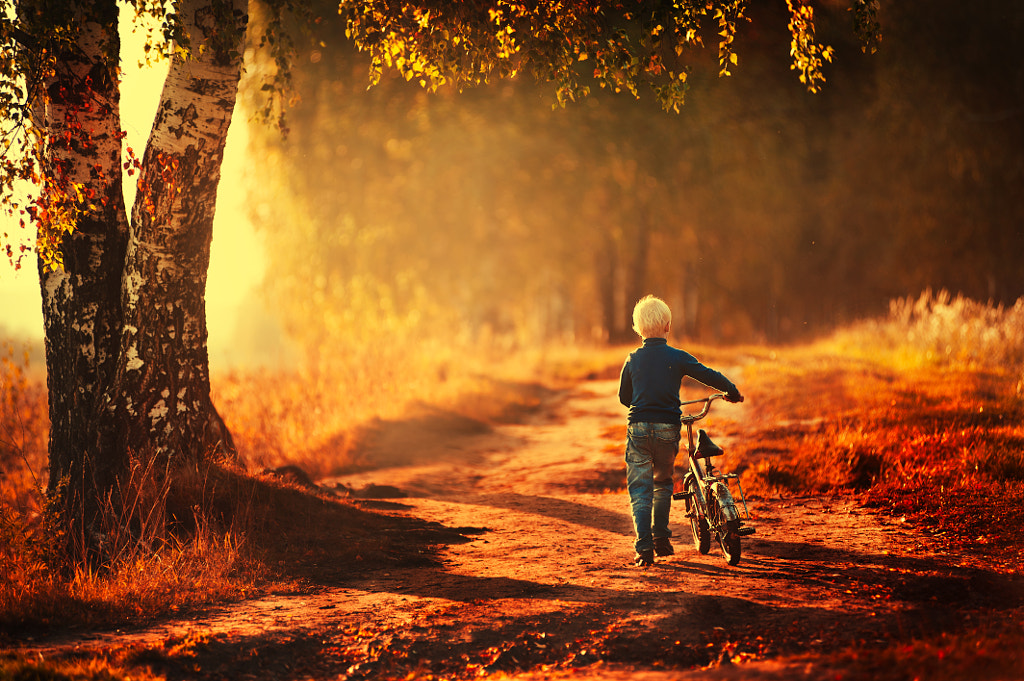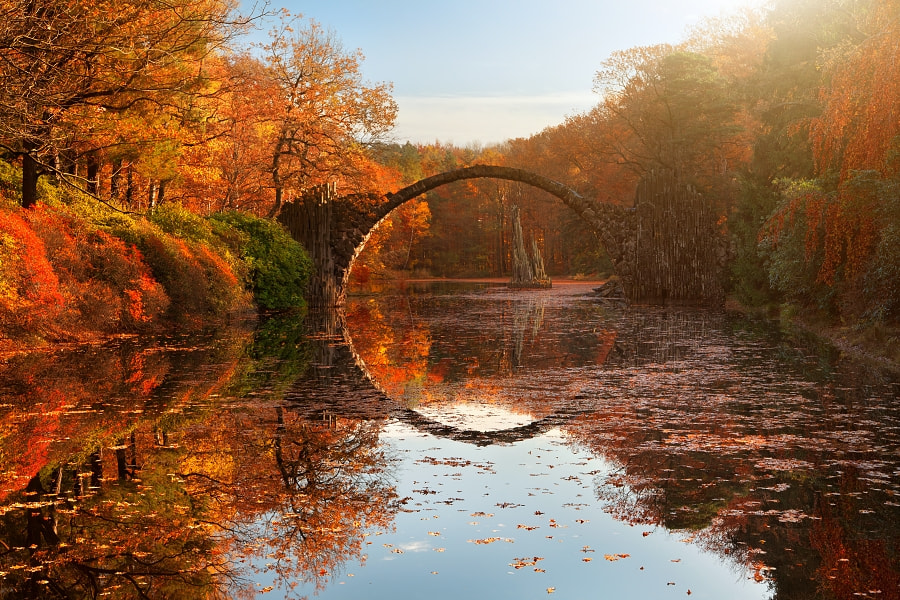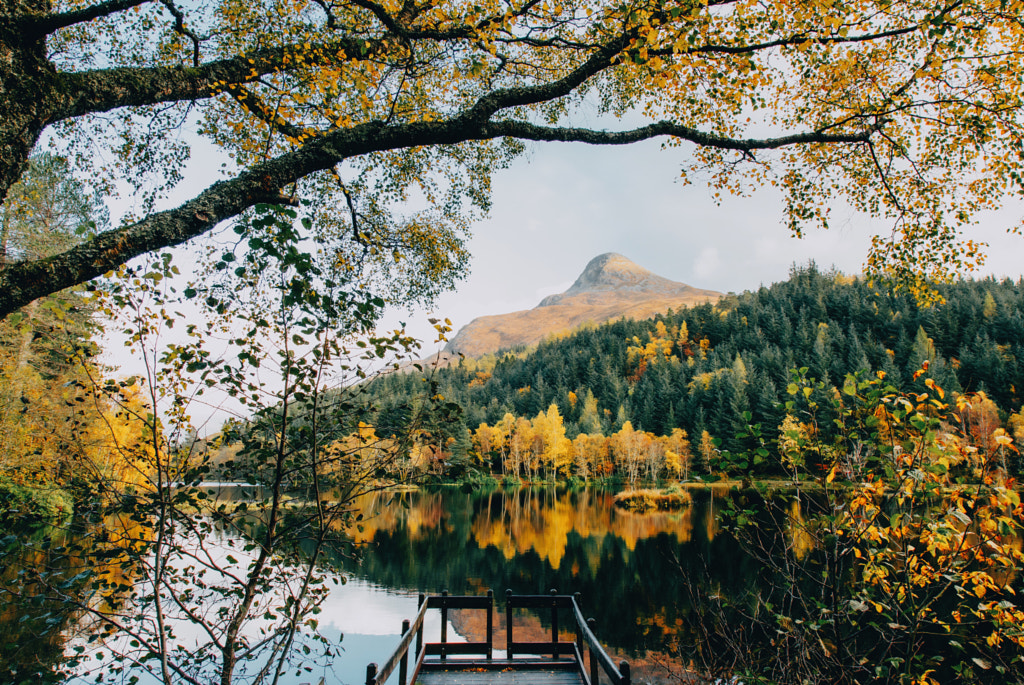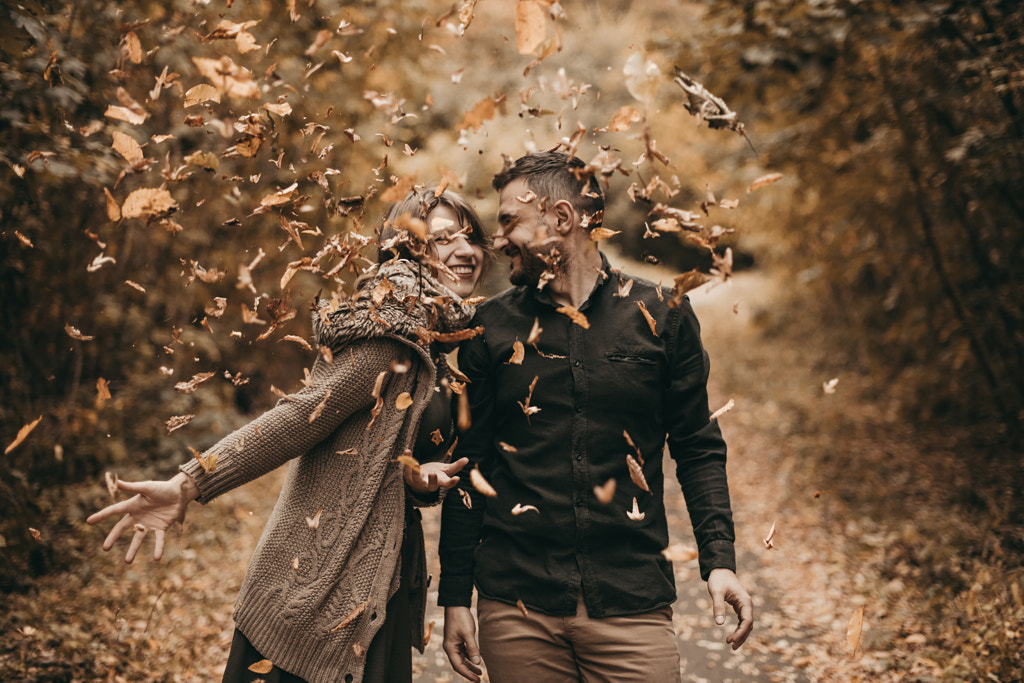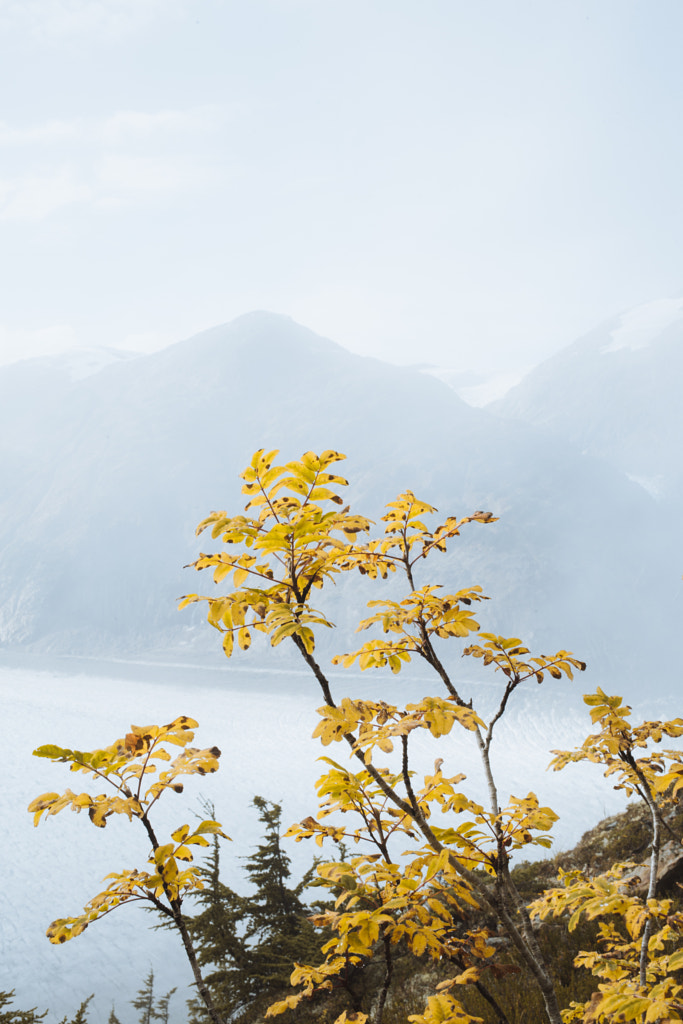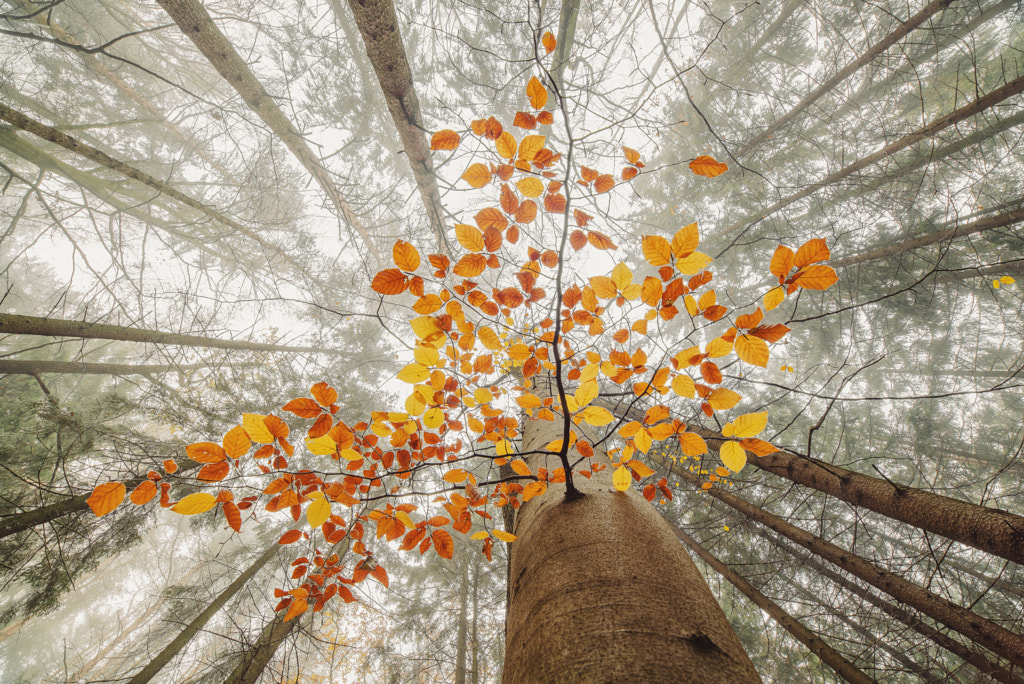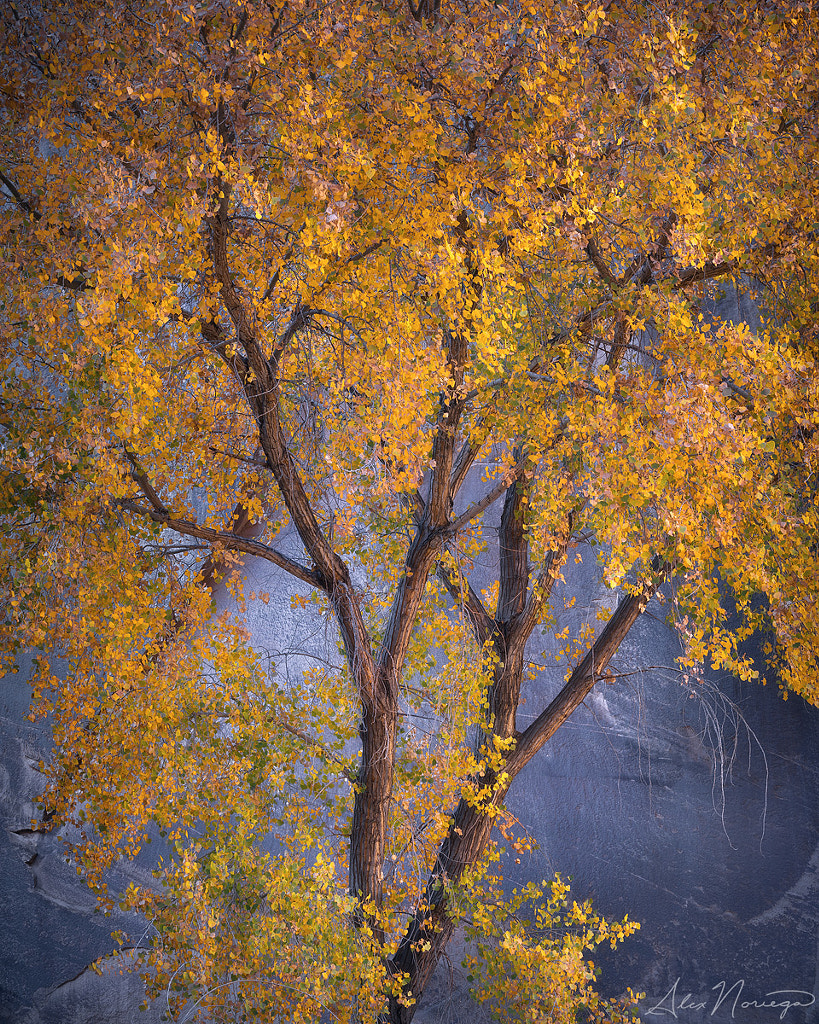As the days grow shorter, tree swallows and monarch butterflies begin their migrations. Garden spiders weave their webs, visible in the morning dew. Over warm water, the cool autumn air creates ethereal fog. The green leaves turn to shades of lemon, amber, and mahogany. The quality of the sunlight itself also changes at this time of year: in summer, it shines directly overhead, but in fall, it’s slanted, resulting in that golden glow.
It’s that sunlight, perhaps more than anything else, that makes autumn a photographer’s dream. From the peaks of the Dolomites in Italy and the passes of Aspen, Colorado, to the tucked-away landscapes of Finnish Lapland and the ancient waterfalls of Iceland, these months invite us to pack up our camera bags, load up our cars, and hit the open road. In this quick guide, we’ll share our top tips for making the most of this time of year.
Do some scouting
In landscape photography, the first phase of location scouting can take place online: check out social media and Google Earth for interesting viewpoints and landscapes in your area. Some states and towns also keep detailed fall color maps to help you pinpoint the perfect spot. The Smoky Mountains website has a dedicated map covering most areas in the US. As a general rule, the colors change first at higher elevations before traveling to lower elevations.
Set aside a day or two for scouting on foot; once you’re physically there, you’ll get a better feel of the lighting conditions and potential subjects to include in your background and foreground. Start thinking about compositions and angles; you can use an app like PhotoPills to help plan and determine where the light will fall at a specific location during a specific time of day.
Wake up early
Bright, midday sunlight can result in too much contrast, so opt for the golden hours instead. Bring a thermos of tea or coffee, and head out to your location before daybreak and in time to capture the sunlight as it peeks through the leaves. As you’ve already scouted and made some rough plans during the daylight hours, you’ll have a good idea of where to set up and what to include in the frame. Bring a headlamp with you if you plan to navigate the area in the dark.
If you’re not an early riser, you can opt for the second golden hour of the day—just before sunset. But bear in mind that early sessions have added benefits, such as abundant fog and fewer people. Local wildlife will also be more active during this time. Plus, early mornings are when you’ll get that smooth, calm water on ponds and lakes—perfect for autumn reflections. As the day begins, the water will start to stir, disrupting that glassy surface.
Embrace overcast skies
Too-bright sunlight can wash out those natural colors, so consider the soft, low-contrast illumination of an overcast sky. Cloudy days are perfect for bringing out those saturated, warm tones. The moment just after rainfall is ideal for juicy colors in nature photography.
Bring that polarizer
Polarizing filters are used to cut down on glare and reflections, but they also tend to bring out richer autumn colors, making them a go-to accessory for nature and landscape photographers during this time of year. You can even opt for a warming polarizer, which will add a subtle yellow or reddish tone.
Watch the light
Light is everything in autumn photography, so be mindful of where and how it’s falling. While front lighting can have a “flattening” effect, back- and side-lighting can instantly elevate an otherwise ordinary moment. Side-lighting is ideal for capturing shadows and textures (e.g., tree bark, sand dunes, and so on), and backlit leaves seem to glow from within. Move around and take some test shots to get a feel for how the light changes your scene; you might find that rotating just a few degrees in one direction or another makes a difference.
Beware of bright spots
Contrast and bright light can become an issue when shooting outdoors, so you want to keep a close eye on your highlights and adjust your exposure accordingly. In fall, it’s easy to blow out the reds, yellows, and oranges, but you want to do what you can to preserve those details. Experiment with your exposure settings to find what works; you can always bracket your exposures for more flexibility.
Frame your subject
Fall colors work best when they’re supporting a strong subject, so take some time to search for the perfect focal point to bring everything together. When composing your shot, think about the entirety of the frame. If you’re a landscape photographer, consider using natural foreground elements to guide the eye toward a mountain or tree in the distance. When visiting Glencoe Lochan in Scotland, for example, Daniel Casson used the fall leaves in the foreground to frame the lake and the landscape beyond.
If you’re a portrait photographer, you can consider using autumn leaves to add movement and help tell a larger story. “Get your subjects to lie in the foliage or throw it in the air,” the 500px team suggests.
Play with color contrast
We associate autumn with warm oranges, yellows, and reds. Referring to the color wheel, you’ll find these hues pair well with complementary colors like blues, purples, and greens. When planning your sessions, think about natural opportunities to bring these tones together: for example, blue water and orange leaves or green pines and red oaks. In this picture from the mountains of Canada, Forrest Mankins paired the warm yellow of the leaves with the blue-violet light of the surrounding glacier landscape.
Find a different perspective
Prime “leaf-peeping” locations and landscapes have been photographed many times over, sometimes from the same vantage point. Feel free to try an angle no one else has; you could get low to the ground and look up to capture the autumn leaves against the blue sky (a bug’s eye perspective). Alternatively, you go the opposite route: seek higher ground by climbing a nearby hilltop for a more expansive view of the colors below.
Experiment with lenses
For more traditional landscapes, a wide-angle will work nicely, but don’t be afraid to experiment with other options as well: a telephoto, for example, can also be great for capturing details in the distance. If you’re photographing landscapes and packing light is important to you (that is, if you’re walking/hiking long distances), we recommend choosing a versatile zoom that’ll give you plenty of range rather than bringing several different prime lenses. For portraits, on the other hand, you can’t beat a great prime lens like a 50mm or 85mm.
Seize the moment
While scouting and planning are essential for shooting fall foliage, one of our most important photography tips is this one: remember that things change quickly. If you see incredible colors, stop what you’re doing, and take advantage of the opportunity to make pictures then and there. By the time you return, you might find those vivid colors have already come and gone.
One way to make the most of this time of year is to ensure you’re outside as much as possible and that you always have your camera with you. Get to know your surroundings, and be ready to head to your location at a moment’s notice. The Dutch photographer Martin Podt spends much of his spare time in autumn exploring the woods; when that magical fog and light arrive, he’s usually there waiting for it. The fall season only lasts so long—soak up as much of it as you can.
Stay patient
The opposite also holds true: if you don’t find the perfect conditions on your first visit, try again. Return to the same spot in various lighting conditions and under different weather. And even if “peak season” has already passed, keep an eye out for opportunities. It could be the last picture of the season that makes the strongest impression. “This slender fellow was one of the last puffy cottonwoods remaining in this area in late autumn, tucked away in a nook against a canyon wall,” the professional nature photographer Alex Noriega said after capturing this painterly view in Utah, above.
Looking to uplevel your photography further? Check out our guide, Tips to build a great landscape photo.
Not on 500px yet? Sign up here to explore more impactful photography.
The post Tips for gorgeous fall photos appeared first on 500px.
